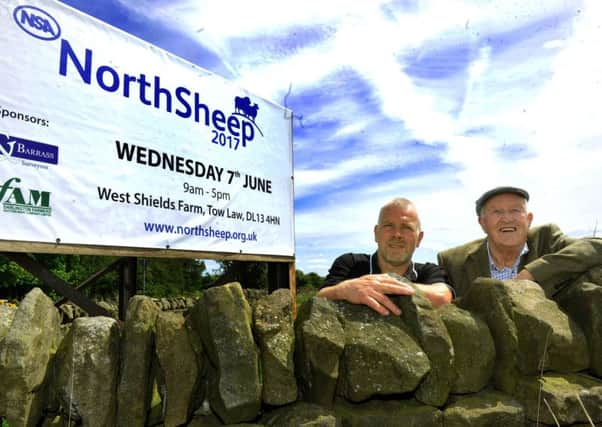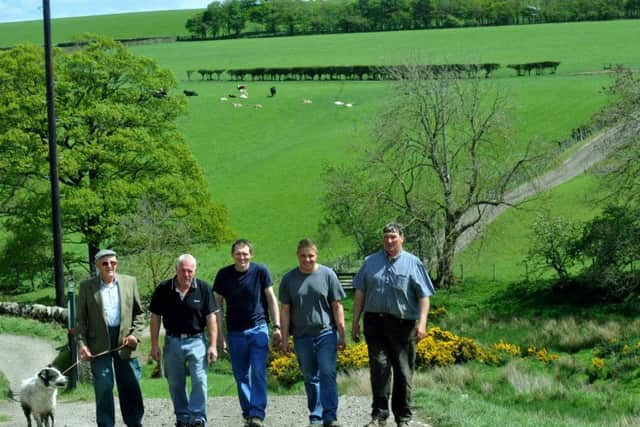Farm of the Week: David Smith prepare to host major sheep summit


North Sheep is organised by the National Sheep Association (NSA) and largely alternates between being held on family farms to the east or west of the Pennines. The only previous event West Shields Farm has hosted was a local young farmers club rally.
“The NSA are talking figures of around 8,000 attending,” says David.
Advertisement
Hide AdAdvertisement
Hide Ad“It’s a bit of an eye opener going to planning meetings where there is a committee of about 30-40 people. We’ve been regular visitors to previous North Sheep events and they are always a pretty good day out and now that lambing is out of the way, apart from about half a dozen, we’re now getting everything ready.”


The family farming operation, set on land that has been home to open cast mining, runs to around 1,250 acres, includes two other farmhouses and land at South Shields Farm and West Carr Farm and involves David, his father John, brother Alan, cousin Jim and his son Richard, and David’s nephew Scott.
“We’re a livestock farm with the sheep and cattle making up most of the business and the renewable energies we produce through logs from our 160 acres of forestry, wind turbines and solar power, plus the single payment making up the rest of our income.
“Our flock runs to 1,500 ewes predominantly Mules. We also have a couple of hundred homebred Texels. We buy replacements during autumn out of the Scotch Blackface type ewe from Northumberland rather than the Swaledale. All our lambs are sold as fat lambs at Hexham livestock market. This is the first year we’ve lambed everything to the Texel ram. We’ve had Mules all my life but we switched from Suffolks to Texels when the Suffolk, we felt, lost a bit of ground. Everything we do is aimed towards the commercial market.
Advertisement
Hide AdAdvertisement
Hide Ad“Lambing started in the last few days of March and we’re usually done by mid-May. We have around 2,200 lambs on the ground at the moment.”


David’s not one for showing his sheep and was surprised when North Yorkshire County Show invited him to be a judge this year.
“I’m judging the native breed classes. Showing stock holds no relevance for me here at West Shields Farm. I will be basing my judgment on commercial attributes of what is in front of me and in the case of rams what I would want for covering my ewes.”
Cattle and sheep account for around the same income each, dependent on the trade for both. The suckler herd runs to 300 cows.
Advertisement
Hide AdAdvertisement
Hide Ad“They’re predominantly homebred out of the Angus bull and a few out of the Shorthorn, which has just gone so at the moment we’re using a Charolais also. In the past we would have had dairy X cows but now we’re pretty much all Angus X beef cows. We use Angus for the replacement heifers with the males born going into the Waitrose scheme via a finisher at Scotch Corner. We’re a registered Waitrose producer. The Charolais and Shorthorn X cattle are sold as stores at Hexham. Everything leaves here at 12 months.
“We used to fatten and finish all our cattle before foot and mouth. Since then we’ve always sold as stores. We’re more of a hill farm suited better to a suckler herd.
“We were cleaned out with foot and mouth on March 23, 2001. It was a hellish time. We had been ready to lock the gates and keep everyone out because as our neighbours were going down we thought we’d be taken out as a contiguous cull, but then discovered we had it. We had a cup of tea while the valuation was made and it wasn’t too bad when we were inside the farmhouse, but when we went outside the slaughtermen had started and it was a bloodbath.
“What happened had to happen but it would be very different for those who had been breeding for generations. They had spent a lifetime trying to get Swaledales and others how they wanted and to see all that work and history destroyed was too much for some.”
Advertisement
Hide AdAdvertisement
Hide AdA striking scene at the farm is the number of wind turbines. They’re not all under the ownership of the Smiths but they are a reminder of how farming continues adapt.
“There are 12 wind turbines in the site. Our neighbour has two, we have six presently but there are four on land we bought in 2005 that don’t become ours for another eight years. We also have a little wind turbine that powers our workshop.”
Solar panels are also fitted whilst logs from the forest go into a biomass boiler, which heats the family’s three farmhouses.
West Shields Farm is 900-1,000ft above sea level. On a clear day you can see to the Cheviots.